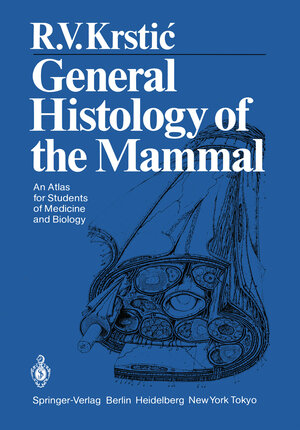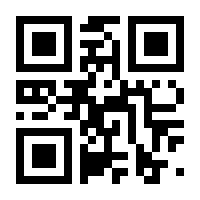
×
![Buchcover ISBN 9783642704222]()
General Histology of the Mammal
An Atlas for Students of Medicine and Biology
von Radivoj V. Krstic, übersetzt von S. ForsterInhaltsverzeichnis
- I. Introduction.
- Origin of Tissues.
- Differentiation. Closed and Wide-Meshed Cell Unions.
- Four Tissue Groups.
- Growth, Regeneration, Hyperplasia, Hypertrophy, Atrophy, Involution, Degeneration, and Necrosis.
- Metaplasia.
- Transplantation, Implantation, and Explantation.
- II. Epithelial Tissue.
- Surface Epithelia Classification of Surface Epithelia.
- Localization of Various Surface Epithelia.
- Simple Squamous Epithelium.
- Simple Cuboidal Epithelium.
- Simple Columnar Epithelium.
- Pseudostratified Columnar Epithelium.
- Transitional Epithelium.
- Stratified Columnar Epithelium.
- Nonkeratinized Stratified Squamous Epithelium.
- Keratinized Stratified Squamous Epithelium (Epidermis).
- Secretory Surface Epithelia Amniotic Epithelium.
- Vascularized Secretory Epithelium.
- Atypical Epithelia.
- Enamel Organ.
- Thymus.
- Changes in Form of Epithelial Cells.
- Functions of Surface Epithelia.
- Glandular Epithelia Exocrine Glands Development of Exocrine and Endocrine Glands.
- Classification of Exocrine Glands.
- Form of Exocrine Glands.
- Unicellular Glands.
- Endoepithelial Multicellular Gland.
- Tubular Gland.
- Tubuloacinar Gland.
- Tubuloalveolar Gland.
- Apocrine Alveolar Gland.
- Holocrine Alveolar Gland.
- Scheme of a Compound Tubuloacinar Gland.
- Endocrine Glands.
- Regeneration and Transplantation of Epithelial Tissue.
- III. Connective and Supporting Tissues.
- Origin of Connecting and Supporting Tissues.
- Classification of Connective and Supporting Tissues.
- Mesenchyme.
- Gelatinous or Mucous Connective Tissue.
- Reticular Connective Tissue.
- White Adipose Tissue.
- White Adipose Tissue Cell.
- Brown Adipose Tissue.
- Brown Adipose Tissue Cell.
- Loose Connective Tissue.
- Fixed Cells: Fibroblast and Fibrocyte.
- Formed and Amorphous Components of the Intercellular Substance.
- Wandering Cells Histiocyte.
- Reticulohistiocytic or Reticuloendothelial System.
- Mast Cell.
- Lymphocytes.
- Monocyte.
- Plasma Cell.
- Eosinophilic Granulocyte.
- Special Forms Pigment Connective Tissue.
- Pigment Cell.
- “Cellular” Connective Tissue.
- Retiform Connective Tissue.
- Irregular Dense Connective Tissue.
- Regular Dense Connective Tissue Tendon.
- Aponeurosis.
- Elastic Connective Tissue.
- Cartilaginous Tissue Hyaline Cartilage.
- Elastic Cartilage.
- Chondrocyte.
- Fibrous Cartilage.
- Notochordal Tissue.
- Bony Tissue Direct Bone Formation.
- Osteoblasts.
- Indirect Bone Formation.
- Secondary Bone Formation.
- Structure of Bone.
- Osteon.
- Osteocyte.
- Osteoclast.
- Regeneration of Bone.
- Dentin and Cementum.
- Possibilities of Transplanting Connective and Supporting Tissues.
- Graft Rejection. Role of Free Connective Tissue Cells.
- IV. Muscular Tissue.
- Three Types of Muscular Tissue.
- Occurrence of Smooth Musculature.
- Smooth Muscle Cells.
- Hypothetical Model of Contraction Mechanism of Smooth Muscle Cells.
- Myoepithelial Cells.
- Skeletal Musculature Histogenesis of Skeletal Musculature.
- Structure of a Muscle.
- Structure of a Muscle Fascicle.
- White Muscle Fiber and Satellite Cell.
- Red Muscle Fiber.
- Structure of a Muscle Fiber.
- Scheme of a Relaxed and a Contracted Myofibril.
- Interaction Between Actin and Myosin Myofilaments.
- Myotendinal Junction.
- Regeneration of Skeletal Muscle Fibers.
- Cardiac Musculature Light-Microscopic Appearance.
- Cardiac Muscle Fibers.
- Electron-Microscopic Appearance.
- Cardiac Muscle Cell.
- Vascularization, Necrosis, Transplantation.
- Impulse-Conducting System.
- Purkinje Fibers.
- Cell of the Impulse-Conducting System.
- V. Nervous Tissue.
- Central Nervous System Histogenesis of Nervous Tissue.
- Cells Originating from Neural Tube and Neural Crest.
- Central andPeripheral Nervous System.
- Relationship Between Neurons and Glia Cells in Central and Peripheral Nervous System.
- Glia of Central Nervous System Ependymal Cells.
- Astrocytes.
- Membrana Limitans Gliae Superficialis and Perivascularis.
- Blood-Brain Barrier.
- Oligodendrocytes.
- Microglia.
- Nerve Cells Form of Nerve Cells.
- Types of Nerve Cell.
- Arrangement of Nerve Cells.
- Nerve Cells and Neuropil.
- Neurosecretory Cells.
- Mode of Action of Polypeptide Hormones.
- Nerve Fibers and Schwann’s Cells.
- Node of Ranvier.
- Schmidt-Lanterman Incisure.
- Regeneration of Nerve Fibers.
- Synapses.
- Components of Peripheral Nervous System.
- Spinal Ganglion.
- Pseudounipolar Nerve Cell.
- Bipolar Nerve Cell.
- Peripheral or Spinal Nerve.
- Perineurium.
- Endings of Efferent Nerve Fibers Motor End Plate.
- Endings of Autonomic Nerves in the Smooth Musculature.
- Endings of Afferent Nerve Fibers Neuromuscular Spindle.
- Golgi Tendon Organ.
- Endings of Afferent Nerve Fibers in Epithelial and Connective Tissues.
- Endings of Afferent Nerve Fibers Around Hair Follicle.
- Meissner’s Corpuscle.
- Vater-Pacini Corpuscle.
- Sympathetic Trunk.
- Multipolar Autonomic Nerve Cell.
- General Reading.




